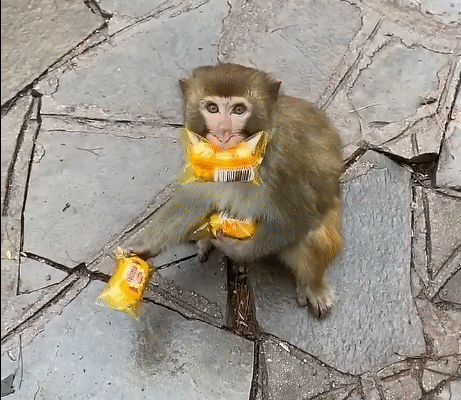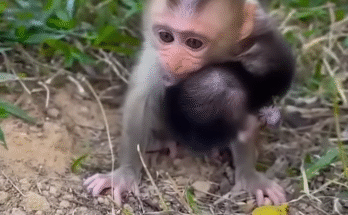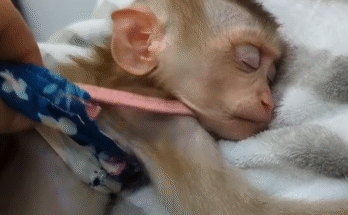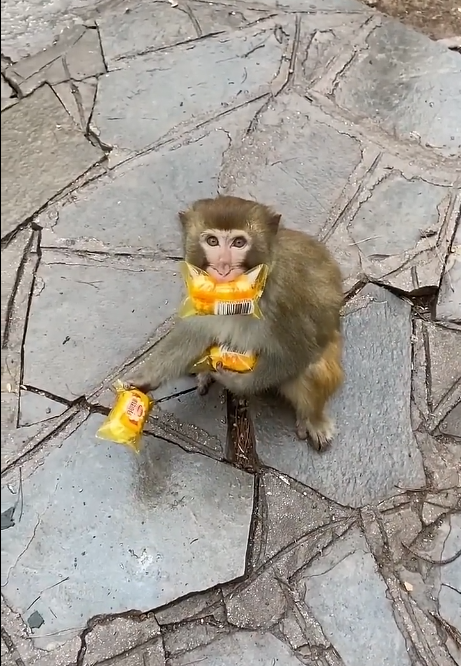
In the quiet little village nestled at the edge of a dense tropical forest, there lived a monkey who was far from ordinary. He wasn’t just a regular monkey swinging from trees, stealing bananas, or making silly faces. This one had a personality so unique that everyone who encountered him had a story to tell. His name, given by the children of the village, was Miko.
Miko had a mischievous grin that never left his furry little face. He would swing into the village every morning, his tail curled like a question mark, his eyes sparkling with curiosity. But the thing that made Miko stand out the most was his obsession with food — not just bananas, but any food he could get his hands on. And he had a hilarious way of asking for it.
Whenever someone was eating, Miko would come closer, tilt his head, point at their meal, and chatter in his monkey language. It sounded almost like he was saying:
“Do you eating? Do you eating?”
At first, the villagers laughed at his silly sounds, but soon, they started imitating him. Children would hold out a piece of bread or fruit and tease: “Miko, do you eating?” and sure enough, the monkey would nod furiously, stretch out his little hands, and snatch the food with a cheeky squeak of laughter.
The First Incident: The Rice Bowl
One sunny afternoon, an old woman named Grandma Sita was sitting outside her hut with a steaming bowl of rice and fish stew. She had barely taken two bites when Miko appeared out of nowhere. He tapped her foot lightly, his wide eyes fixed on her bowl.
“Do you eating?” his chatter seemed to say.
Grandma Sita chuckled. “Yes, Miko, I am eating. But this is my lunch.”
Miko tilted his head and let out a dramatic sigh, placing his tiny hands on his empty stomach. The villagers nearby laughed so hard that Grandma Sita eventually gave in and handed him a spoonful. Miko grabbed it, shoved it into his mouth, and let out a noise that sounded suspiciously like, “Mmmmmm!”
From that day, Miko became known as the “Do You Eating Monkey.”
The Market Mischief
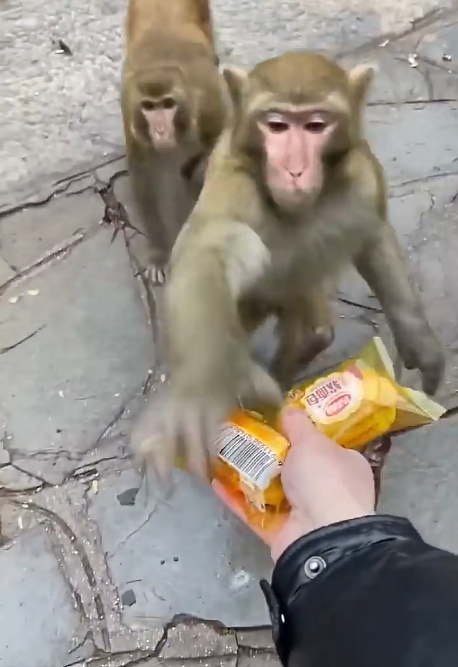
If there was one place Miko loved more than anywhere, it was the village market. The colors, the smells, the endless piles of food — it was like paradise for him. But the villagers had to be on guard, for Miko was both clever and sneaky.
One morning, as the vendors were setting up their stalls, Miko spotted a basket full of ripe mangoes. He crouched low, tail twitching with excitement. Slowly, he crept forward — step by step, like a thief in the night. Just as he reached out to grab one, the fruit seller turned around.
“Miko! What are you doing?”
Miko froze, then puffed up his chest and made his usual sound:
“Do you eating?”
The fruit seller burst out laughing, unable to stay angry. He tossed Miko a mango, which the monkey caught mid-air with a triumphant squeal. Then, instead of running away, he climbed onto a nearby roof and ate it right in front of everyone, juice dripping down his chin. The crowd below cheered, and Miko bowed like a performer on stage.
The Children’s Friend
Though Miko often caused chaos, he was loved deeply by the village children. They would play hide-and-seek with him, chase him through the fields, and share their snacks during lunch breaks.
One day, a boy named Arun brought a packet of biscuits from town. As soon as Miko saw it, he came running, his arms waving like a child begging for candy.
“Do you eating?” his chatter rang out.
“Yes, Miko, I’m eating,” Arun teased. “But will you dance for a biscuit?”
To everyone’s surprise, Miko stood up on two legs and started bouncing around, clapping his hands like he had just invented a monkey dance. The children laughed until their stomachs hurt. Arun handed over the biscuit, and Miko took it gently, sitting down like a polite little gentleman before munching away.
From then on, Miko became the star of every children’s game. He wasn’t just a monkey; he was a performer, a comedian, and a friend.
The Big Festival
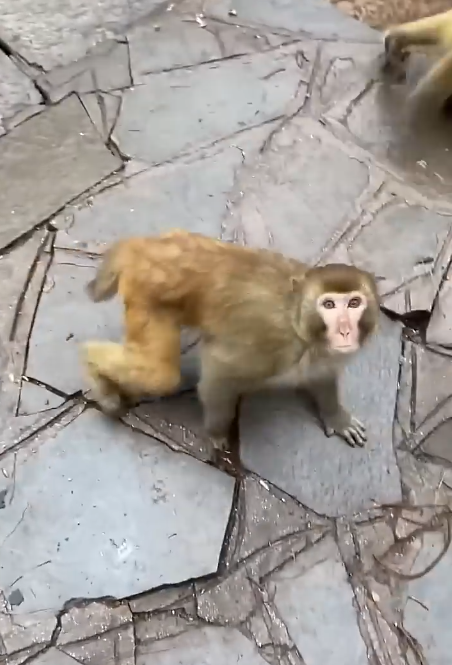
Every year, the village held a harvest festival with music, dancing, and of course, lots of food. Miko never missed it. This year, however, he went beyond his usual antics.
As the villagers gathered around a large table filled with roasted chicken, rice cakes, and fruit, Miko climbed onto the roof of the pavilion. He watched eagerly, his eyes darting from one dish to another. The smell of roasted meat made him drool.
Suddenly, he leapt down onto the table, landing right in the middle of the feast. Everyone gasped. But before anyone could scold him, Miko stood up, spread his arms wide, and squealed loudly:
“Do you eating?! Do you eating?!”
The crowd erupted in laughter. Even the village chief, who was usually very strict, couldn’t help but chuckle. Instead of chasing Miko away, they filled a little plate just for him. He sat cross-legged like a tiny human, nibbling happily while everyone else feasted.
That night, Miko wasn’t just a funny monkey; he was the festival’s guest of honor.
The Time Miko Got Fooled
But of course, Miko wasn’t always the winner. One day, the villagers decided to teach him a lesson. Knowing his obsession with food, they placed a banana in the middle of the square. But this banana wasn’t normal — it was coated in sticky honey.
Miko spotted it from afar and raced over. He didn’t even ask “Do you eating?” this time — he just grabbed it and shoved it into his mouth.
Within seconds, his hands, face, and fur were covered in sticky honey. He tried to shake it off, but the more he moved, the messier it got. The children laughed until tears rolled down their cheeks.
Finally, Grandma Sita came to the rescue with a bucket of water. “Oh, Miko, you greedy little thing,” she said, rinsing him clean. Miko looked embarrassed for a moment, but when she handed him a fresh banana, he grinned and squeaked once more:
“Do you eating?”
The crowd roared with laughter again.
A Monkey Who Taught Joy
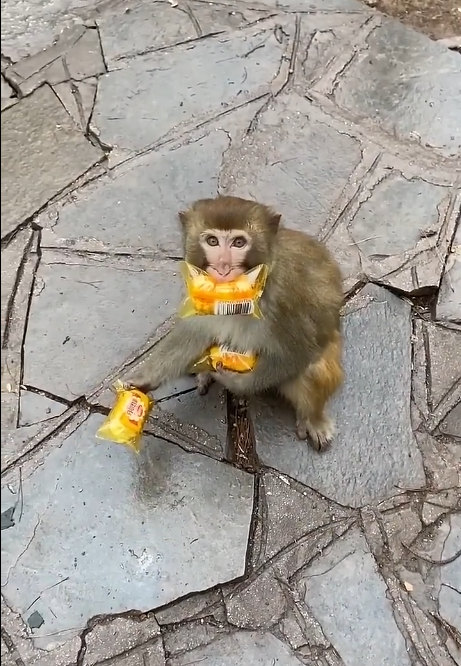
Over time, Miko became more than just a mischievous monkey. He became a symbol of joy, laughter, and togetherness in the village. Whenever someone felt sad, all it took was Miko’s funny chatter and cheeky grin to lift their spirits.
Children grew up telling stories about him. Travelers passing through the village would hear of the legendary “Do You Eating Monkey” and stop just to meet him. Miko, of course, loved the attention — and the snacks that always followed.
Though he was just an animal, Miko reminded the villagers of something important: life doesn’t always have to be serious. Sometimes, laughter and a shared bite of food are the best things in the world.
Conclusion
And so, the story of Miko the Funny Monkey continues to echo in the little village. His silly chatter — “Do you eating?!” — became more than just a joke. It became a phrase that bonded the villagers together.
Next time you find yourself eating something delicious, maybe you’ll hear a faint monkey voice in your head, asking with mischief and laughter:
“Do you eating?” 🐒😂
And perhaps, just perhaps, you’ll smile, remembering that sometimes the funniest, simplest moments in life are the ones that make it all worthwhile.
